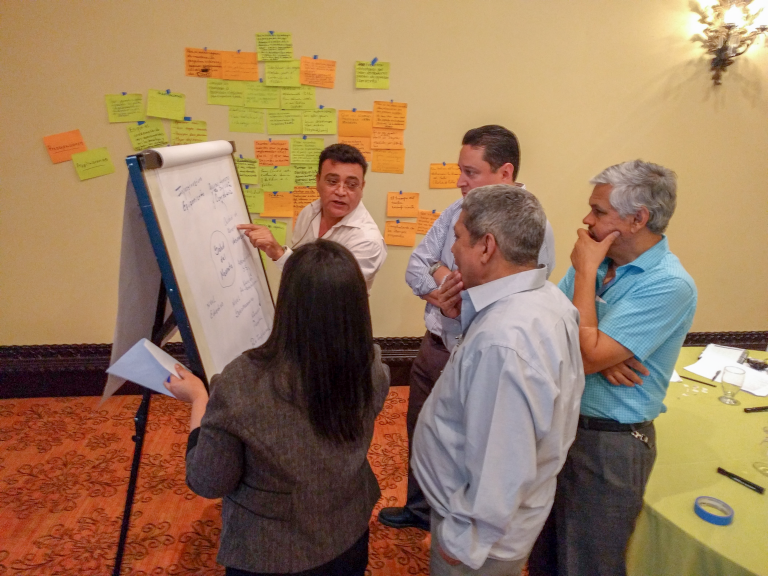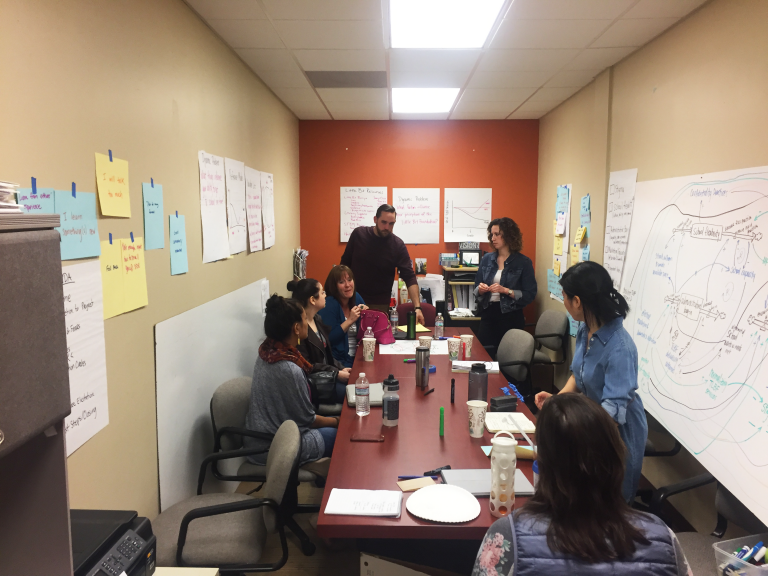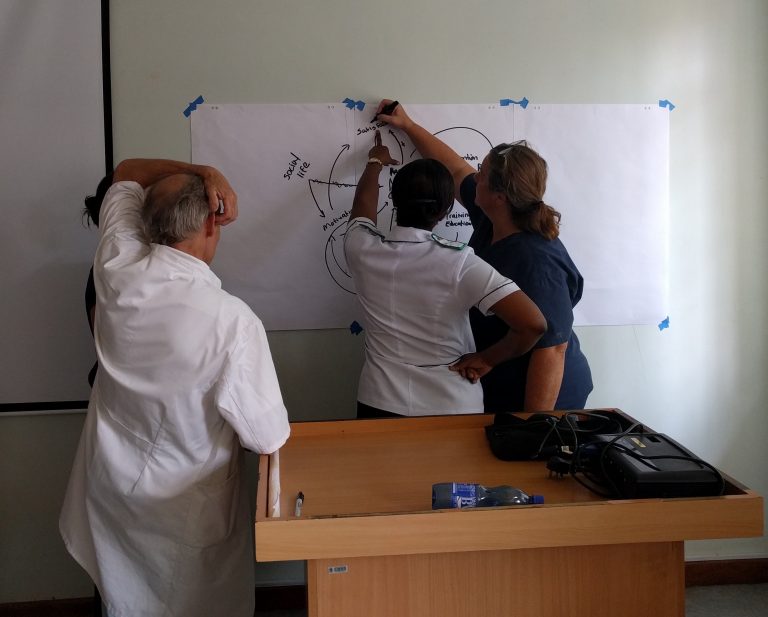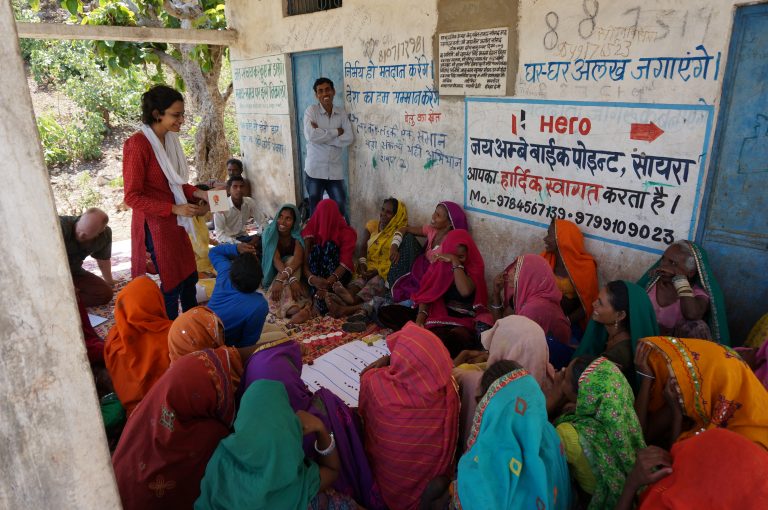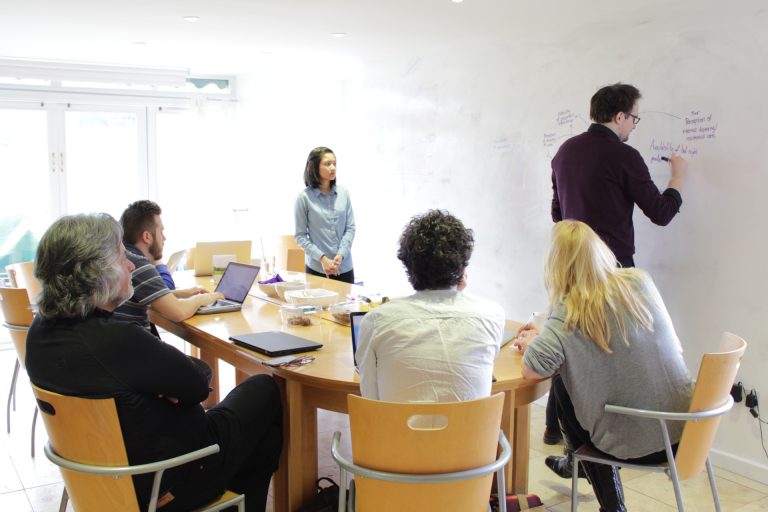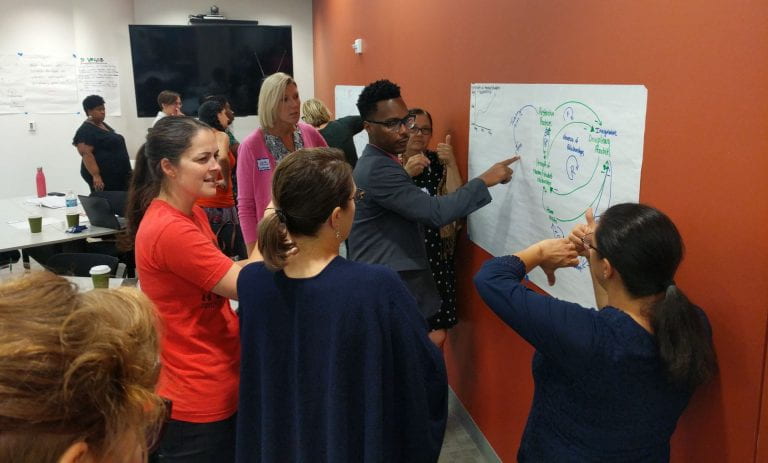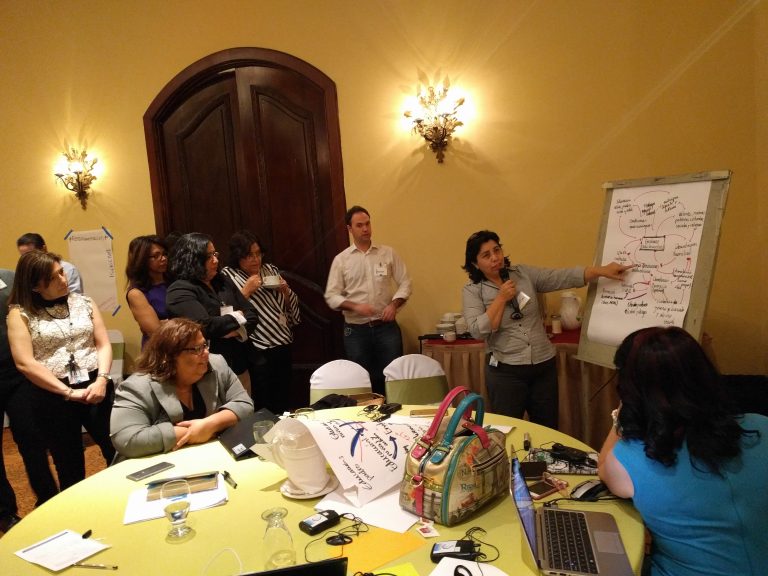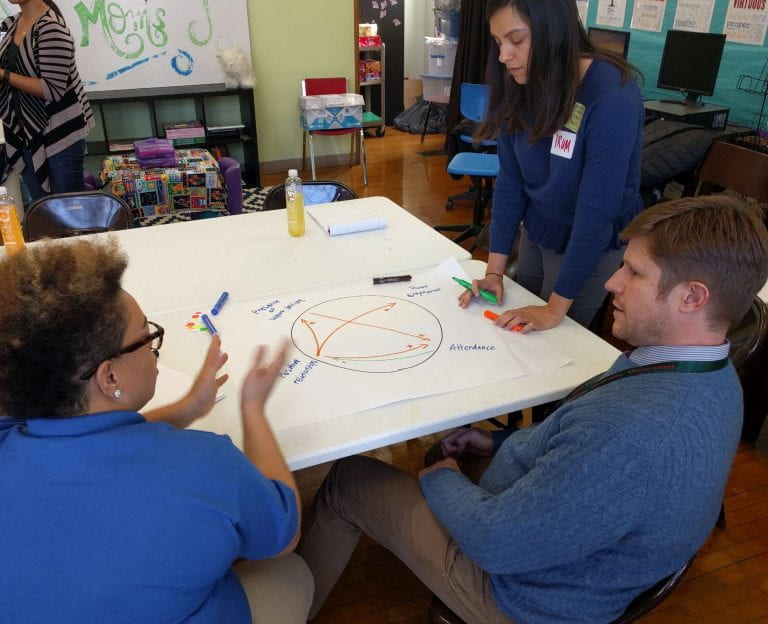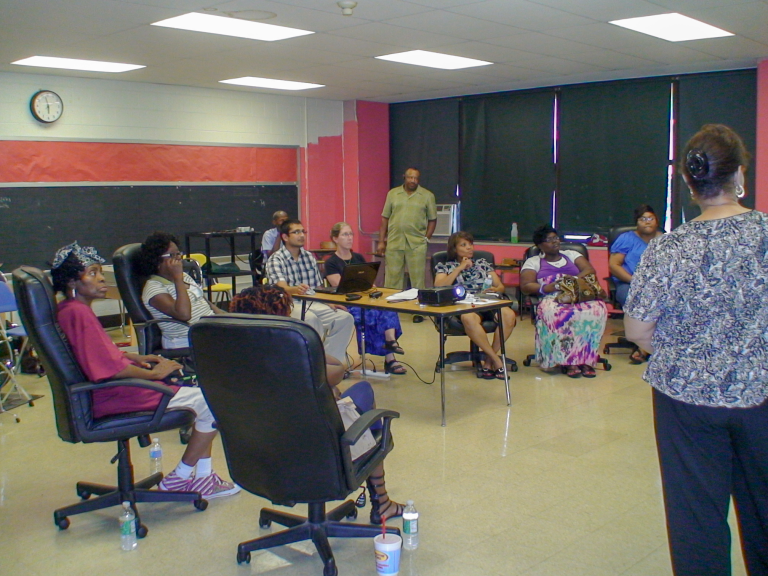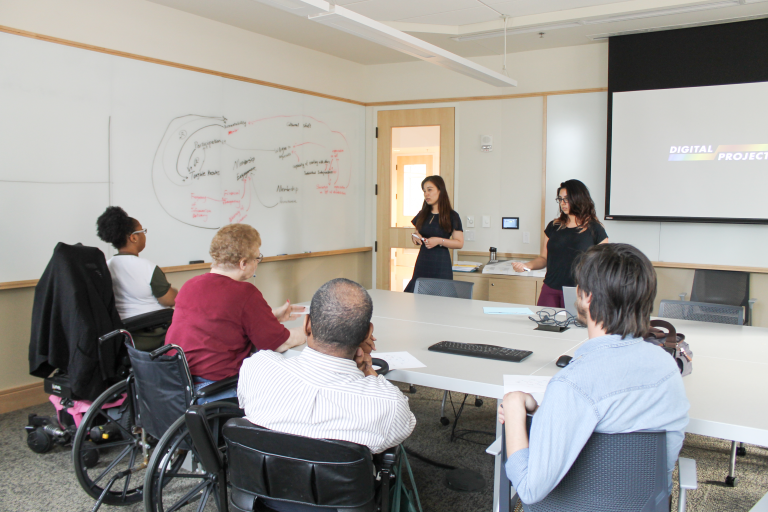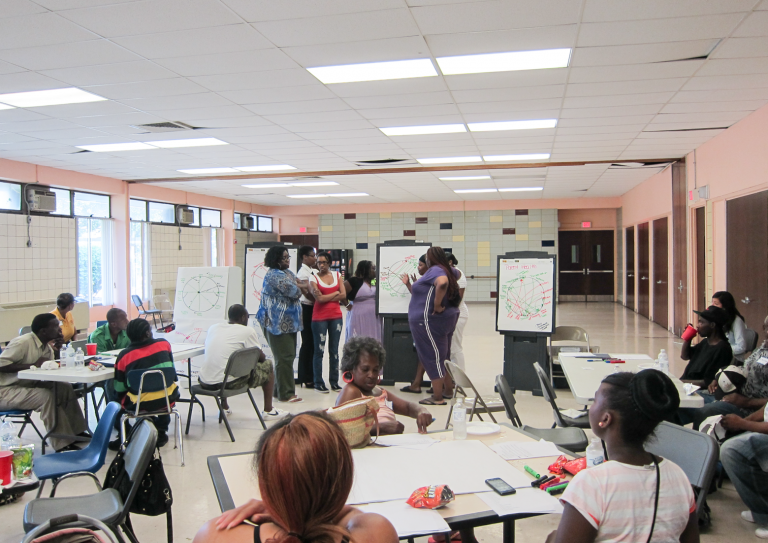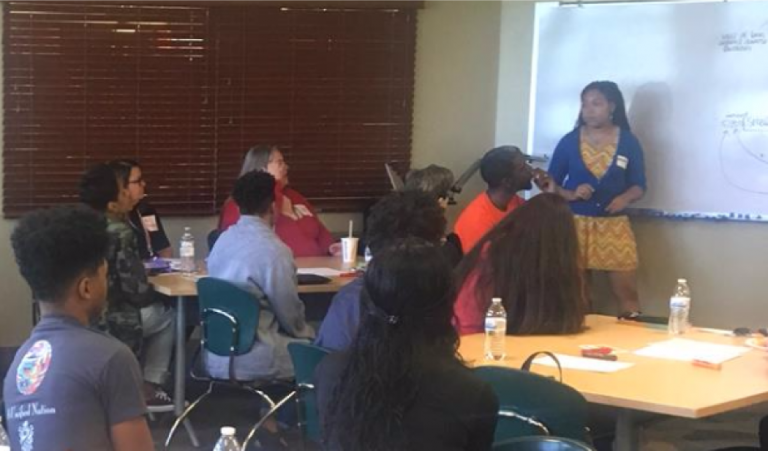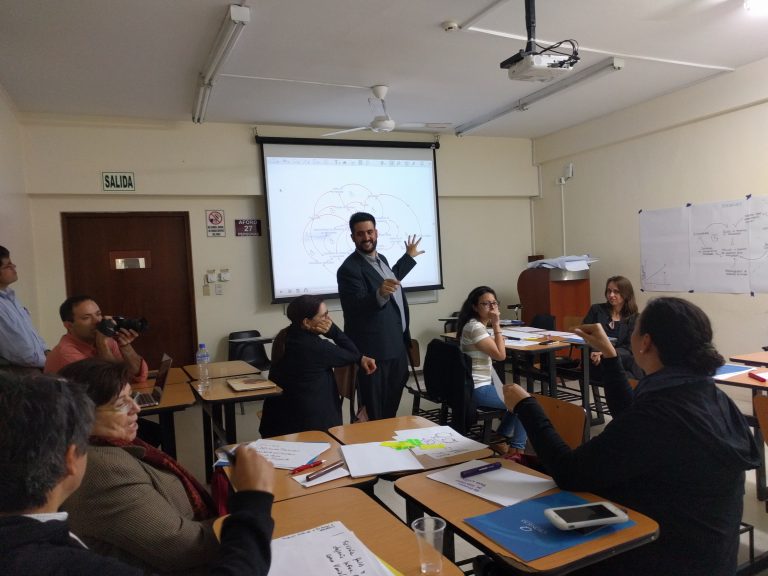Items
How the Senior Community Service Employment Program Influences Participant Well-Being: A Participatory Research Approach With Program Recommendations
Halvorsen, C. J., Werner, K., McColloch, E., & Yulikova, O. (2023). How the Senior Community Service Employment Program Influences Participant Well-Being: A Participatory Research Approach With Program Recommendations. Research on Aging, 45(1), 77–91. https://doi.org/10.1177/01640275221098613
Implementation of Evidence-Based Practice and Organizational Performance
Hovmand, P.S. & Gillespie, D.F. (2010). Implementation of Evidence-Based Practice and Organizational Performance. Journal of Behavioral Health Services & Research, 37(1). https://doi.org/10.1007/s11414-008-9154-y
isee Exchange
isee Exchange is a repository of system dynamics content created by Stella® users around the world.
Learning to track systems change using causal loop diagrams
Brown, A.; Millar, L.; Hovmand, P.S.; Kuhlberg, J.; Love, P.; Nagorcka-Smith, P.; Odenthal, M.; Owen, B.; Whelan, J.; Allender, S. (2019). Learning to track systems change using causal loop diagrams. Obesity Research & Clinical Practice, 13(1). https://doi.org/10.1016/j.orcp.2016.10.210
Leverage points to improve smoking cessation treatment in a large tertiary care hospital: a systems-based mixed methods study
Ramsey, A.T.; Prentice, D.; Ballard, E.; Chen, L.; & Beirut, L.J. 2019. Leverage points to improve smoking cessation treatment in a large tertiary care hospital: a systems-based mixed methods study. BMJ Open, 9(7). doi: 10.1136/bmjopen-2019-030066
Leverage Points: Places to Intervene in a System
Introductory reading by Donella Meadows on system leverage and system interventions. Hosted by The Donella Meadows Project.
Outcomes for implementation research: conceptual distinctions, measurement challenges, and research agenda
Proctor E, Silmere H, Raghavan R, Hovmand P, Aarons G, Bunger A, Griffey R, Hensley M. (2011). Outcomes for implementation research: conceptual distinctions, measurement challenges, and research agenda. Administration and Policy in Mental Health and Mental Health Services Research, 38(2).
Promoting knowledge to policy translation for urban health using community-based system dynamics in Brazil
Morais, L.M.O., Kuhlberg, J., Ballard, E. et al. Promoting knowledge to policy translation for urban health using community-based system dynamics in Brazil. Health Res Policy Sys 19, 53 (2021). https://doi.org/10.1186/s12961-020-00663-0
Research to Translation: The Healthy Schools Toolkit and New Approaches to the Whole School, Whole Community, Whole Child Model
Scaling Up Housing Services Within the Child Welfare System: Policy Insights From Simulation Modeling
Patrick J Fowler, Katherine E Marcal, Saras Chung, Derek S Brown, Melissa Jonson-Reid, Peter S Hovmand. (2019). Scaling up housing services within the child welfare system: Policy insights from simulation modeling. Child Maltreatment, 1-10.
Scaling-up impact in perinatology through systems science: Bridging the collaboration and translational divides in cross- disciplinary research and public policy
Munar, W., Hovmand, P. S., Fleming, C., & Darmstadt G.L. (2015). Scaling-up impact in perinatology through systems science: Bridging the collaboration and translational divides in cross- disciplinary research and public policy. Seminars in Perinatology, 39 (3), 416-423.
Scriptapedia
Scriptapedia is a resource for sharing and adapting structured group model building "scripts"
Simulation modeling for primary care planning in Singapore
Matchar, D.B., Ansah, J.P., Bayer, S., & Hovmand, P. (2017). Simulation modeling for primary care planning in Singapore. Paper presented at the Proceedings – Winter Simulation Conference, 2123-2134.
Simultaneous linear estimation using structural equation modeling
Hovmand, PS & Chalise, N. (2015). In Rahmandad, H.; Oliva, R.; & Osgood, N. Editors. Analytical Methods for Dynamic Modelers. Cambridge: MIT Press.
A user-friendly introduction to useful analytical tools for model building, estimation, and analysis, presenting key methods and examples.
Solving Homelessness from a Complex Systems Perspective: Insights for Prevention Responses
Fowler, P.J.; Hovmand, P.S.; Marcal, K.E.; Das, S. (2019). Solving Homelessness from a Complex Systems Perspective: Insights for Prevention Responses. Annual Review of Public Health, 40. https://doi.org/10.1146/annurev-publhealth-040617-013553
Strengthening child inclusion in the classroom in rural schools of Pakistan and Afghanistan: What did we learn by testing the system dynamics protocol for community engagement?
Jean-François Trani, Parul Bakhshi, Alan Mozaffari, Munib Sohail, Hashim Rawab, Ian Kaplan, Ellis Ballard, Peter Hovmand. (2019). Strengthening child inclusion in the classroom in rural schools of Pakistan and Afghanistan: What did we learn by testing the system dynamics protocol for community engagement? Research in Comparative and International Education, 14(1).
System Dynamics Society
The System Dynamics Society is an international, nonprofit organization devoted to encouraging the development and use of System Dynamics and systems thinking around the world. The Society provides a forum in which researchers, educators, students, consultants and practitioners in the academic, corporate and public sectors interact to keep abreast of current developments, build on each other’s work and introduce newcomers to the field.
Systems and Us
A blog dedicated to exploring systems, system archetypes, and complexity in the world around us.
Systems thinking in 49 communities related to healthy eating, active living, and childhood obesity.
Brennan, L.K., Sabounchi, N.S., Kemner, A.L., & Hovmand, P. (2015). Systems thinking in 49 communities related to healthy eating, active living, and childhood obesity. Journal of Public Health Management and Practice : JPHMP, 21, S55-S69.
The “Long Tail” and Public Health: New Thinking for Addressing Health Disparities
Kreuter, M.W.; Hovmand, P.S.; Pfeiffer, D.J.; Fairchild, M.; Rath, S.; Golla, B.; & Casey, C. 2014. The “Long Tail” and Public Health: New Thinking for Addressing Health Disparities. American Journal of Public Health, 104(12). doi: 10.2105/AJPH.2014.302039
The global syndemic of obesity, undernutrition, and climate change: The Lancet Commission report
Boyd A Swinburn, Vivica I Kraak, Steven Allender, Vincent J Atkins, Phillip I Baker, Jessica R Bogard, Hannah Brinsden, Alejandro Calvillo, Olivier De Schutter, Raji Devarajan, Majid Ezzati, Sharon Friel, Shifalika Goenka, Ross A Hammond, Gerard Hastings, Corinna Hawkes, Mario Herrero, Peter S Hovmand, Mark Howden, Lindsay M Jaacks, Ariadne B Kapetanaki, Matt Kasman, Harriet V Kuhnlein, Shiriki K Kumanyika, Bagher Larijani, Tim Lobstein, Michael W Long, Victor KR Matsudo, Susanna DH Mills, Gareth Morgan, Alexandra Morshed, Patricia M Nece, An Pan, David W Patterson, Gary Sacks, Meera Shekar, Geoff L Simmons, Warren Smit, Ali Tootee, Stefanie Vandevijvere, Wilma E Waterlander, Luke Wolfenden, William H Dietz. (2019). The Lancet.
The Systems Thinker
A repository of blog posts and articles written by leaders in the field of systems thinking. The Systems Thinker works to catalyze effective change by expanding the use of systems approaches. All articles are available free of charge.
Transfusion Decision Making in Pediatric Critical Illness
Markham, C.; Small, S.; Hovmand, P.S.; & Doctor, A. (2017). Transfusion Decision Making in Pediatric Critical Illness. Pediatric Clinics of North America, 64(5). doi: 10.1016/j.pcl.2017.06.003
Using community-based system dynamics modeling to understand the complex systems that influence health in cities: The SALURBAL study
Langellier, B.A.; Kuhlberg, J.A.; Ballard, E.. Slesinski, C.; Stankov, I.; Gouveia, N.; Meiesel, J.D.; Kroker-Lobos, M.F.; Sarmiento, O.L.; Teixeira, W.; & Diez Rous, A.V. (2019). Using community based system dynamics modeling to understand the complex factors that influence health in cities: The SALURBAL study. Health and Place, 60.
Using Community-Based System Dynamics to increase inclusive education in Afghanistan and Pakistan
Mozaffari A, Safi M, Wahidi H, et. al (2020). Using Community Based System Dynamics to increase inclusive education in Afghanistan and Pakistan. Enabling Education Review, Issue 8.,
Using system dynamics modeling to evaluate a community-based social marketing framework: A computer simulation study
Brian Joseph Biroscak, Carol Bryant, Mahmooda Khaliq, Tali Schneider, Anthony Dominic Panzera, Anita Courtney, Claudia Parvanta, Peter Hovmand. (2019). Using system dynamics modeling to evaluate a community-based social marketing framework: A computer simulation study. Journal of Social Marketing, 9(1).
Vensim
Vensim is software developed by Ventana Systems that supports both qualitative and quantitative system dynamics modeling. It is available commercially and as a free "Personal Learning Edition".
Victims arrested for domestic violence: unintended consequences of arrest policies
Hovmand, P. S., Ford, D. N., Flom, I. and Kyriakakis, S. (2009), Victims arrested for domestic violence: unintended consequences of arrest policies. Syst. Dyn. Rev., 25: 161-181. doi:10.1002/sdr.418
Waters Center for Systems Thinking
Provides practical and accessible tools, resources, and strategies to build systems thinking capacity in classrooms, school districts, businesses, and organizations.
